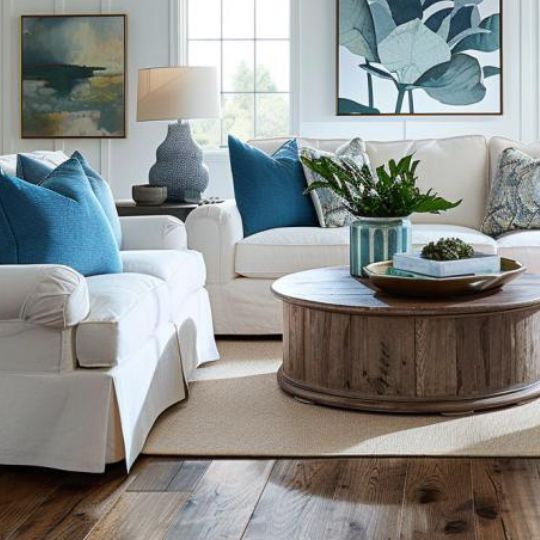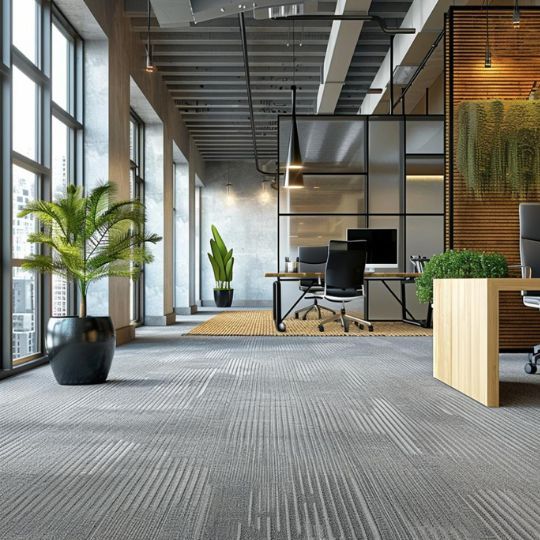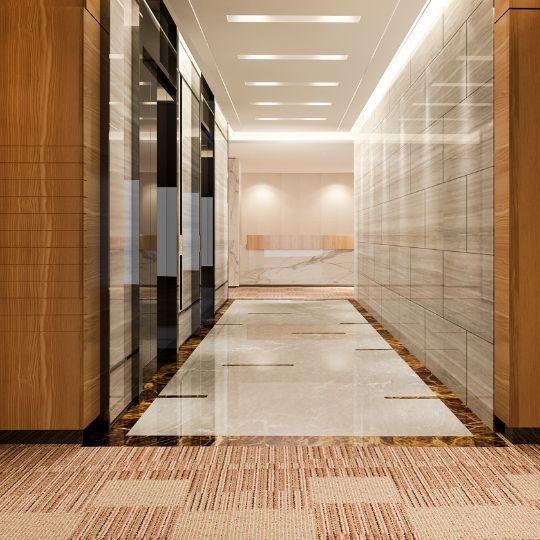Why Regular Hardwood Polishing is Essential for Floor Longevity

The hardwood floors in our homes have the potential to last a lifetime if just given the right amount of care and attention. Daily wear and tear on these beautiful floors can take its toll, however, understanding how to polish, refinish, and maintain them can make a well-preserved hardwood floor the envy of your neighbours. In this article, we’ll be looking at the impact of daily wear and tear on hardwood floors as well as exploring the key differences and benefits of polishing versus refinishing and looking at the science behind polishing. Finally, we’ll provide some top tips on maximizing beauty and durability with a regular hardwood polishing routine.
The Impact of Daily Wear and Tear on Hardwood Floors
Hardwood floors are timeless and impressively resilient, often lasting decades with the proper care and maintenance. However, daily wear and tear can cause damage over time, reducing the beauty and lifespan of hardwood floors.
The scratch and dent resistant properties of hardwood floors can be diminished if furniture legs are not secured with felt pads, or if a tool or pet’s nails leave their mark. Any movement of heavy furniture can cause minor abrasions which, over time, can leave the wood looking worn and even splintering. Furthermore, placing furniture in one place for too long can cause indents and depressions in the wood.
In addition to furniture, the constant traffic of human and pet feet as well as shoes can leave imprints in hardwood, showing its age and reducing its attractiveness. Heavy objects dropped onto the floor such as suitcases, tools, or dishes may cause nicks and scratches which can compromise the integrity of the floor’s varnish. Consequently, it’s important to take care of hardwood floors, as damage that isn’t addressed in its early stages can worsen over time.
Fortunately, keeping hardwood floors in good condition is an achievable goal. Regular vacuuming and sweeping with a softer brush will remove the dirt and debris that can build up in the grooves of the floor, and reduce the risk of scratches. Regularly cleaning and buffing with a safe cleaning product will help maintain the wood’s original shine. Moreover, regularly moving furniture and rugs should help prevent depressions and scratches from forming.
Overall, hardwood floors are beautiful and often long-lasting additions to any room. However, it’s important to be aware of the wear and tear associated with daily activities so that any necessary repairs can be handled in a timely manner, and the floor’s attractive appearance is preserved for years to come.
Polishing vs. Refinishing Hardwood Floors: The Key Differences and Benefits
Polishing and refinishing hardwood floors provide quite different results. Polishing merely restores the floors to their original appearance, without any repairs or superficial damages. However, refinishing actually involves replacing the upper protective coat of the flooring, usually with a new coat of wax, varnish or polyurethane. Moreover, it serves as an opportunity to sand away any scratches or hard-to-remove stains that are present.
The key difference between these two processes is the amount of labor and time it requires to complete them. Polishing is a relatively simple task that can be completed in a matter of hours, while refinishing requires more time, effort, and skill. It is advisable to receive professional help in order to achieve a seamless, even finish. In addition, it is important to take into account the existing condition of the flooring before attempting any process. Polishing, for instance, can be done on any hardwood floors, regardless of the state of deterioration. On the other hand, refinishing may not be a suitable option for floors that are extremely scratchy or discolored.
Similarly, the type of finish applied also has a significant effect on the end result. A standard wax finish can provide a glossy, blemish-free finish while a matte coating can provide a slightly more subtle, rustic appearance. Furthermore, some specialized finishes, such as enriched wax, tung oil or shellac, can also serve to add a unique touch. For instance, tung oil is known to further prevent discoloration and water damage.
Overall, both polishing and refinishing can provide unique benefits to hardwood floors. Properly polished floors can last for years without needing any further restoration, while a refinishing project can mprove the overall aesthetics of the space. As a result, homeowners should understand the implications of each to make the most suitable decision for their floors. Consequently, consulting with a professional hardwood flooring expert can be a great way to start the process.
Extending Your Hardwood Floor’s Life: The Science Behind Polishing
Extending the life of a hardwood floor can make a massive difference in the overall appeal of a home. Polishing a hardwood floor is an effective way to protect it from wear and tear, and applying a new layer of polish can quickly refresh the entire space. However, the science of polishing the floor goes much deeper and entails a few key components.
First, the choice of polish products is highly important. Different polishes and finishes can produce drastically varied results, and depending on the desired finish, different products must be used. For instance, a matte or eggshell finish will require a different type of polish than a high-gloss. Moreover, varnish, shellac, and water-based polyurethane are all various types of polish that can be chosen if desired. It is important to research the various polish types in order to make the best choice.
In addition, the method of polishing is an integral nature of the process. Applying the wrong amount of pressure, or using the wrong cleaning and buffing method, can all lead to a less-than-desirable outcome. Therefore, it is imperative to know the do’s and don’ts of buffing and polishing a floor with whatever type of product has been chosen. Additionally, depending on the material of the floor, some polishes may bond better than others. For instance, hardwood is more likely to absorb some types of varnishes and polyurethanes than others.
Furthermore, proper maintenance is also incredibly important in extending the life of a hardwood floor. If a high-gloss finish is chosen specifically for its strength and longevity, then it is important to regularly clean and buff the floor in order to ensure its resilience. Similarly, if another type of polish is used to give a less glossy look, then it is still important to regularly sweep and mop the area in order to ensure the outer shell of the floors remains undamaged.
Finally, the frequency of applying polish is ultimately up to the homeowner. If a higher gloss or protective layer is desired, then each coat of polish should be reapplied according to the manufacturer’s instructions. As a result, any dirt, dust, and scratches that accumulate over time can be shielded and the life of the floor can be extended to its fullest. Consequently, keeping up with regular maintenance and care is essential in extending the life of a hardwood floor.
Routine Care Tips: Maximizing Beauty and Durability with Regular Hardwood Polishing
Hardwood floors are extremely attractive and durable, however they must be cared for properly in order to maintain their beauty and durability for years to come. Routine care is key for hardwood floors, and regular polishing is one of the best ways to maximize both their beauty and durability. Polishing should be done every three to four months, in order to preserve the natural finish of the hardwood and provide a protective layer.
On the other hand, it’s important to use the correct products for hardwood polishing. Make sure to use products specifically designed for hardwood, as other types of polish can damage the surface. These products usually contain a small amount of wax that creates a protective layer over time.
Moreover, it’s important to clean the floor prior to polishing. Use a dust mop or vacuum to remove dirt and dust, and then use a damp mop in order to lift any stubborn particles. To prevent water damage, be sure to use only a damp mop, and never a wet one.
In addition, use a special polishing pad when dispersion the polish, as this distributes it evenly over the floor. Generally, circular motions are preferred when polishing, as the polish can be applied more easily to the crevices of the floors. Finally, when the polish is dry, buff the floor with a special cloth.
Similarly, keep in mind that when caring for a hardwood, more is not necessarily better. Excessive polishing can take away the natural appearance of the wood, so it’s best not to overdo it. Furthermore, it is also important to remember to remove any excess of polish using a damp cloth, so that the residue does not build up over time.
For instance, to protect hardwood from scratches and structure damage, protect the floor with mats and rugs. This is particularly important near the entrance, where dirt and other objects that could damage the floor are most likely to be carried in.
As a result, following these routine polishing tips can help hardwood owners achieve a beautiful, durable floor for years to come. Polishing should be done regularly to remove dirt and maintain a protective layer, and special care should be taken to ensure that the correct products and pads are used. Furthermore, it is essential to protect the floor from scratches and other structure damage with mats and rugs. With regular care and maintenance, hardwood floors can provide years of beautiful and luxurious living.
Final Thoughts
Both polishing and refinishing hardwood floors have their own unique benefits and knowing when it is time to use one or the other is important in order to maintain and extend their lifespan. Taking the necessary steps for routine cleaning is essential to build up a protective layer on the surface of the wood, while polishing helps to keep the floor looking great while also providing prevention against damage from wear and tear over time. Through regular buffing, waxing, and refinishing, hardwood floors can remain in a beautiful and durable condition for years to come. Call Voda to get your hardwood polished today!
Frequently Asked Questions
How often should I polish my hardwood floors to maintain their longevity?
It depends on the type of hardwood floor you have and how much traffic it sees. Generally, it is recommended to polish your hardwood floors at least once a year in order to maintain their longevity. If your floors receive higher levels of traffic, you should consider polishing them more often.
What are the signs that my hardwood floor is in need of polishing?
1. Dull Appearance – Your hardwood floors may start to look more dull and faded as time passes and may need to be polished to restore the shine.
2. Scratches and Dings – If you start to notice more scratches and dings appearing in your hardwood floors, you may want to polish them to get rid of these imperfections and restore the original look.
3. Dirt and Grime Build-up – Trapped dirt and grime can build up on your hardwood floors over time and can start to give them a dingy appearance. If your floors are not looking as clean, it may be time to polish them.
4. Sticky Residue – If you can see a sticky residue on your floors from spills, it is likely time to reapply a layer of polish to help protect them.
Can regular polishing help reduce the need for more expensive hardwood refinishing?
Yes, regular polishing can help reduce the need for more expensive hardwood refinishing. Polishing your hardwood floors can help protect the wood from dirt and spots, prolonging its life and making dirt and spills easier to clean. As long as the floor was sealed properly when it was first installed, a regular schedule of polishing can help maintain the sealed finish of hardwood floors and reduce the need for more costly refinishing in the future.
How does polishing protect hardwood from environmental factors and daily wear?
Polishing hardwood floors helps to protect them from daily wear and environmental factors such as dust and dirt. Polish forms a protective barrier on the top layer of the floor, which keeps the wood protected from scuffing, scratching, and other damage. This also helps to “seal” the floor, preventing liquids and dirt from seeping into the pores of the wood and causing stains. Additionally, polishing hardwood flooring prevents it from drying out and fading from exposure to sunlight and other UV light sources.






